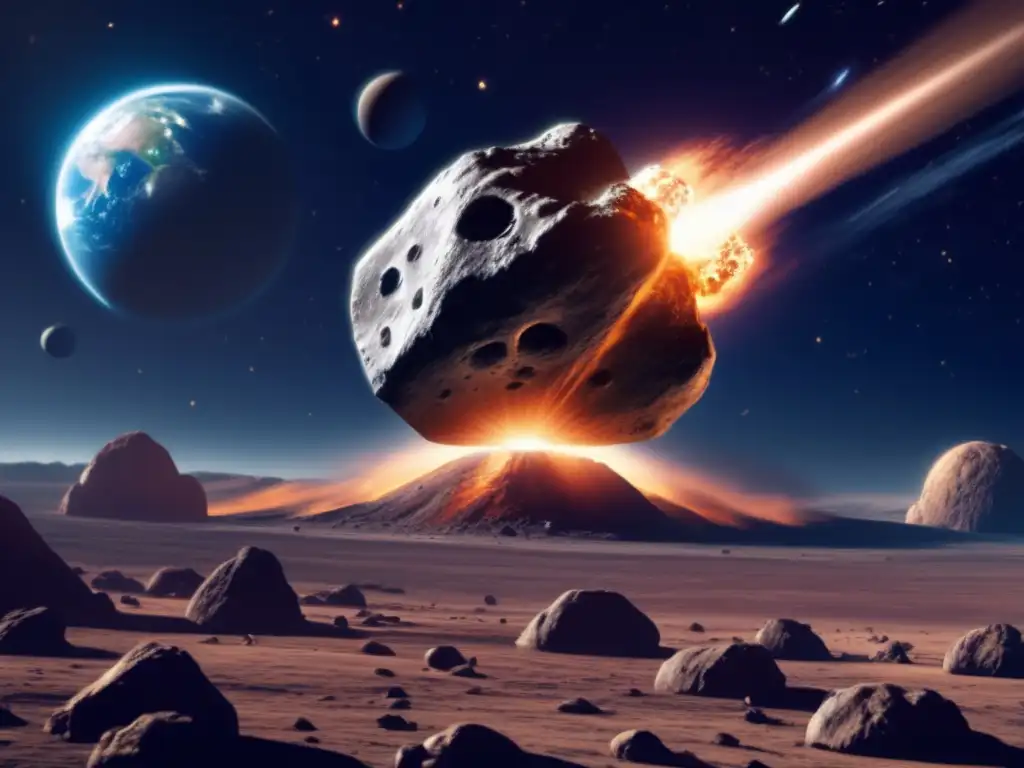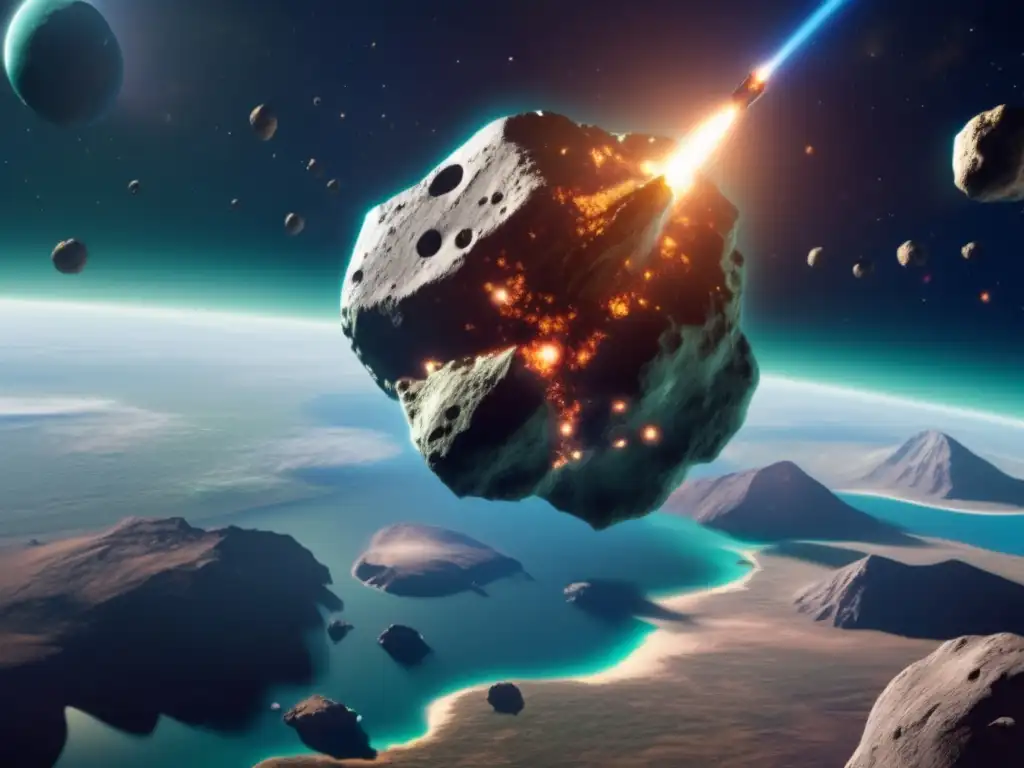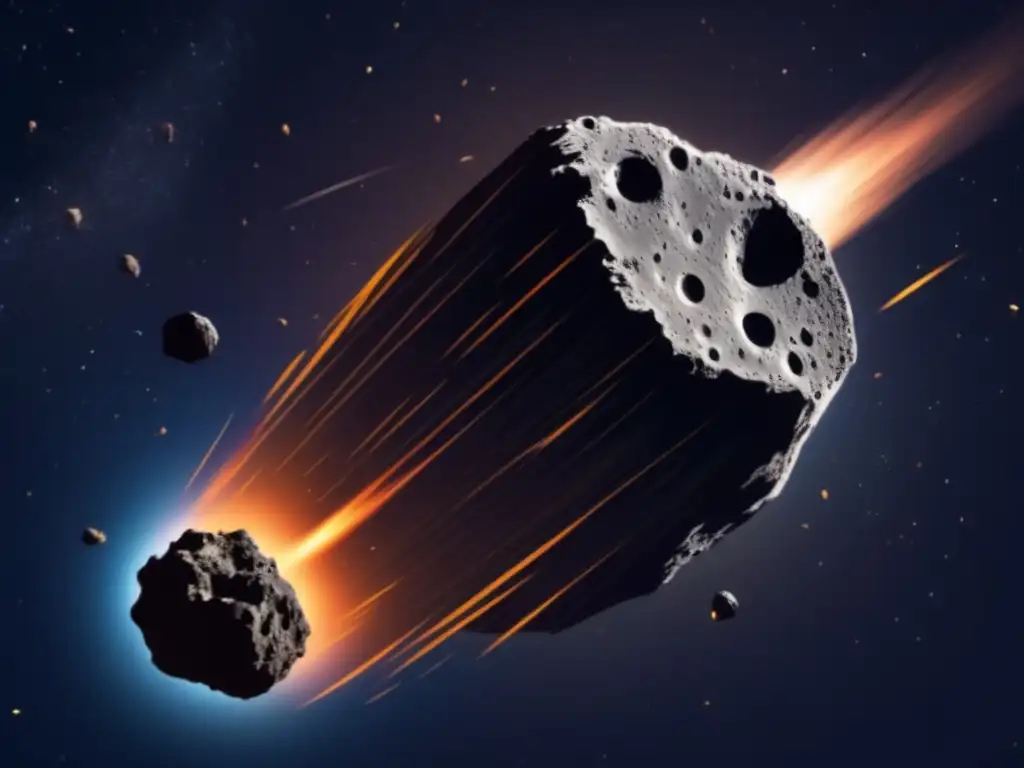Our Planetary Bodyguards: Strategies For Asteroid Defense

Introduction
Asteroids have long been a topic of fascination and fear for humanity. While most asteroids pose no immediate threat to Earth, there is always the possibility of a catastrophic collision, which could result in global devastation. Fortunately, there are many ongoing efforts to identify potentially hazardous asteroids and develop strategies to protect our planet. In this article, we will explore some of the most promising strategies for defending the Earth against asteroid impacts.
The Threat from Space: Understanding Asteroid Collisions

The Anatomy of an Asteroid Impact
An asteroid impact on Earth can cause damage on a massive scale. The size and speed of the asteroid determine the severity of the impact. When an asteroid enters Earth's atmosphere, it experiences intense frictional heating, causing it to heat up and disintegrate. The remaining fragments can hit the ground with tremendous force, causing craters and ejecting debris into the atmosphere.
The History of Asteroid Impacts on Earth
Asteroid impacts have occurred throughout Earth's history, and evidence of past impacts can be seen in the form of impact craters and other geological features. Some of the most famous asteroid impacts include the Chicxulub impact, which is believed to have caused the extinction of the dinosaurs, and the Tunguska event, which flattened an estimated 80 million trees in Siberia in 1908.
Identifying Potentially Hazardous Asteroids
In order to defend against asteroid impacts, it is essential to identify potentially hazardous asteroids. NASA's Near-Earth Object (NEO) program tracks and monitors asteroids that come within a certain distance of Earth. This program utilizes ground-based telescopes and space-based instruments to detect and track asteroids, allowing scientists to predict potential impact scenarios.
Our Planetary Bodyguards: Strategies for Asteroid Defense

Gravity Tractor
The gravity tractor is a proposed method of asteroid defense that uses the gravitational pull of a spacecraft to slowly alter the course of an asteroid. This method would involve sending a spacecraft to rendezvous with the asteroid and maintain a position close to it for an extended period of time. Over time, the spacecraft's gravitational pull would change the asteroid's trajectory, preventing a collision with Earth.
Kinetic Impactors
Kinetic impactors are another proposed method of asteroid defense. This strategy involves using a spacecraft to ram into an asteroid at high speed. The impact would cause the asteroid to change course, preventing it from colliding with Earth. This method has been successfully tested on a small scale, and plans are underway to test it on a larger scale in the coming years.
Laser Ablation
Laser ablation is a proposed method of asteroid defense that involves using powerful lasers to vaporize the surface of an asteroid. As the surface material is vaporized, it creates a small amount of thrust, which can alter the asteroid's course. This method is still in the experimental phase, but it shows promise as a means of defending against asteroid impacts.
Deflection through Nudging
Another proposed method of asteroid defense involves nudging an asteroid off course using a gravitational tug. This method is similar to the gravity tractor, but instead of maintaining a close proximity to the asteroid, the spacecraft would pass by the asteroid at a distance, altering its course through its gravitational pull.
Frequently Asked Questions

-
What is the likelihood of an asteroid impact?
While the chance of a catastrophic asteroid impact is relatively small, it is still a serious concern. Scientists estimate that there are over 1,000 potentially hazardous asteroids that could potentially collide with Earth.
-
How much warning do we have before an asteroid impact?
The amount of warning time before an asteroid impact can vary depending on the size and trajectory of the asteroid. In some cases, we may only have a few hours of warning, while in others, we may have several years to prepare.
-
What is the most effective method of asteroid defense?
There is no one-size-fits-all solution to asteroid defense. Each asteroid presents its own unique challenge, and the most effective strategy will depend on the size, composition, and trajectory of the asteroid.
-
What are the potential consequences of an asteroid impact?
An asteroid impact could cause a wide range of damage, including craters, tsunamis, wildfires, and global climate change. Depending on the size and speed of the asteroid, the impact could result in global devastation and loss of life.
-
What is being done to prevent asteroid impacts?
There are many ongoing efforts to identify potentially hazardous asteroids and develop strategies to defend against them. NASA's Near-Earth Object program, as well as other national and international organizations, are working to monitor and track asteroids and develop new technologies for asteroid defense.
Conclusion
Asteroid defense is a complex and ongoing challenge, but one that is vitally important for the survival of humanity. By utilizing a combination of detection, monitoring, and defense strategies, we can reduce the risk of catastrophic asteroid impacts and protect our planet for generations to come. We encourage our readers to learn more about asteroid defense and to support ongoing efforts to safeguard our planet from these cosmic threats.
Thank you for taking the time to read this article. We hope it has been informative and thought-provoking. Please share your thoughts and comments with us in the section below, and don't forget to subscribe to www.asteroidrealm.com for more articles on asteroids and planetary science.
Additional Resources

For more information on asteroid defense and related topics, please visit the following resources:
 Standing Guard In The Cosmos: Tools For Asteroid Defense
Standing Guard In The Cosmos: Tools For Asteroid Defense Ready, Aim, Deflect: The Latest In Asteroid Defense Strategies
Ready, Aim, Deflect: The Latest In Asteroid Defense Strategies Facing The Cosmic Threat: Techniques For Asteroid Defense
Facing The Cosmic Threat: Techniques For Asteroid DefenseIf you want to discover more articles similar to Our Planetary Bodyguards: Strategies For Asteroid Defense, you can visit the Planetary Defense category.
Leave a Reply

Articulos relacionados: